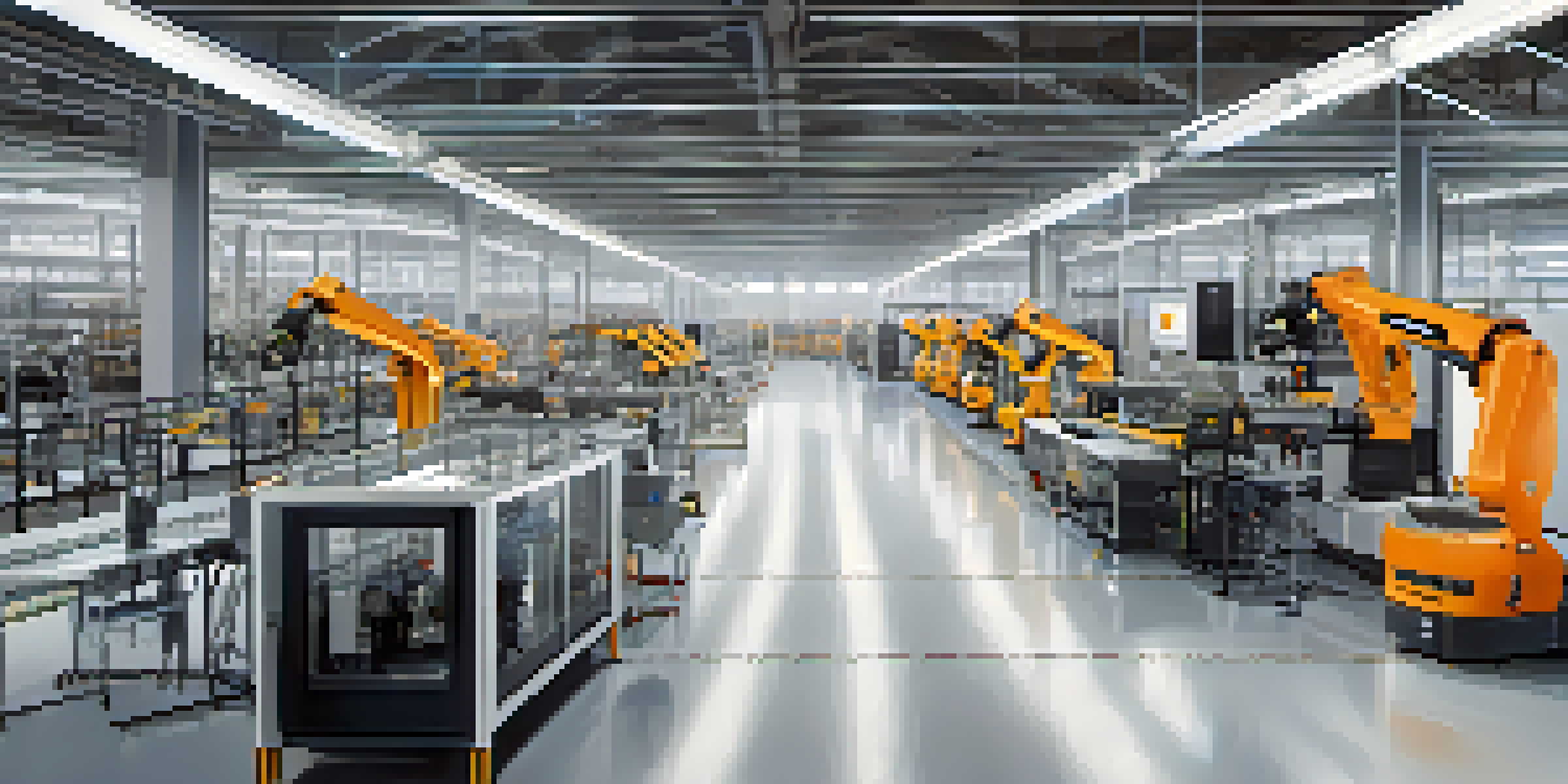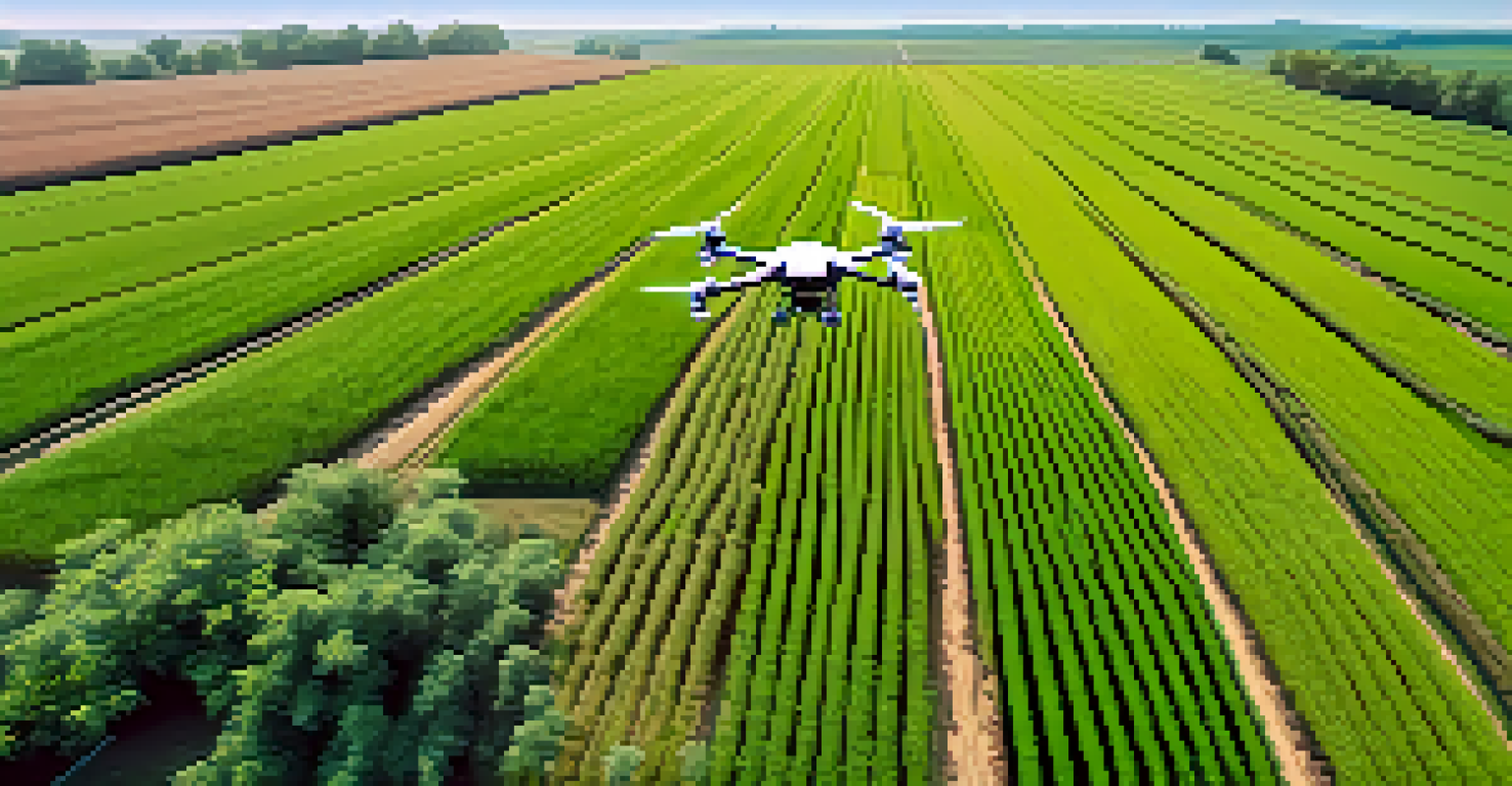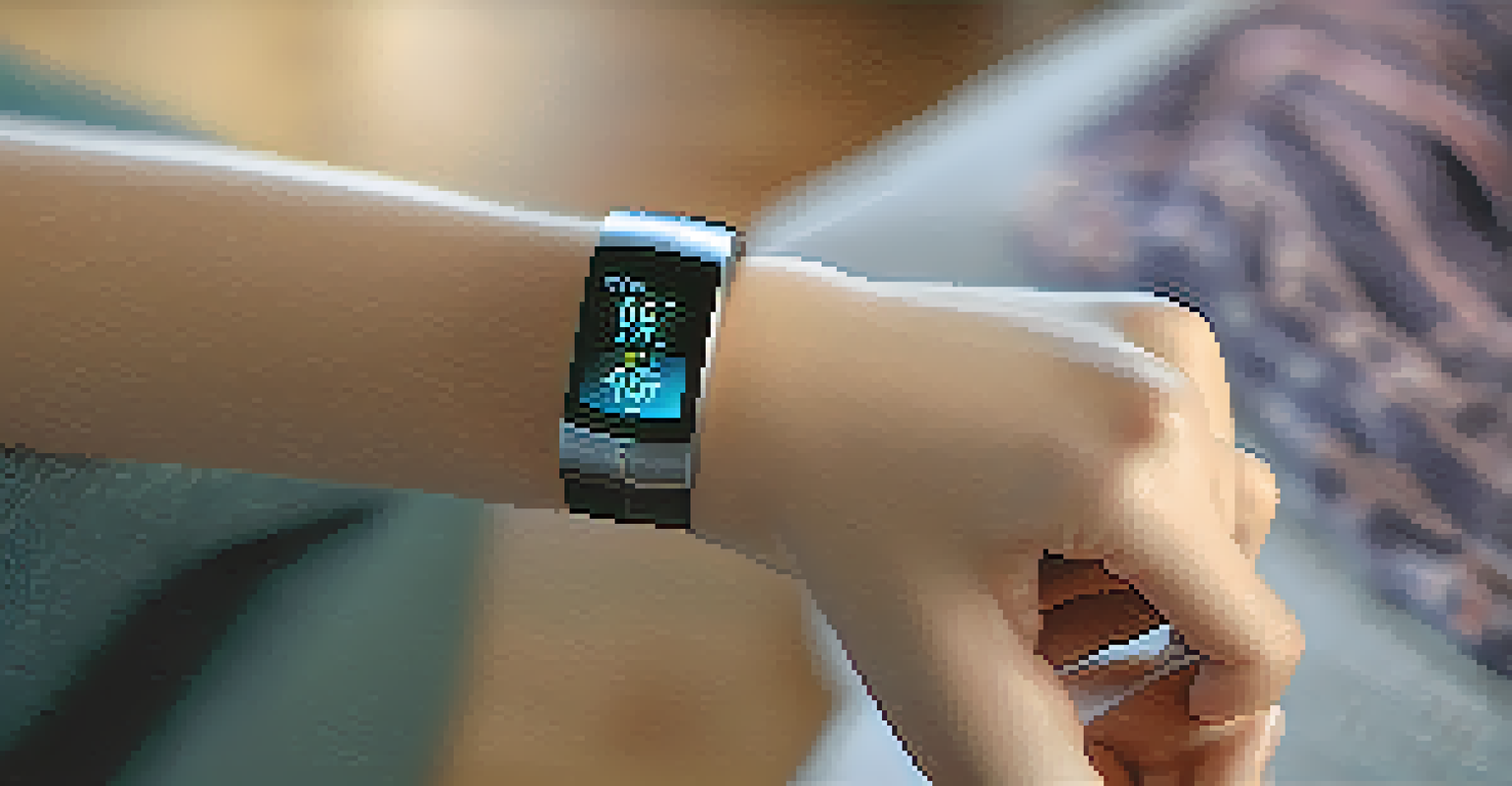Emerging Trends in Remote Monitoring Technologies

The Rise of IoT in Remote Monitoring Solutions
The Internet of Things (IoT) is revolutionizing how we approach remote monitoring. By connecting devices to the internet, organizations can gather real-time data from various sources, enhancing their ability to track performance and respond to issues promptly. For instance, smart sensors installed in manufacturing plants can detect equipment malfunctions before they lead to downtime, saving both time and money.
The future is already here — it's just not very evenly distributed.
Moreover, IoT technology enables seamless communication between devices, which means that data collected from one device can inform the operations of another. This interconnectedness leads to more informed decision-making and better resource management. For example, in agriculture, soil moisture sensors can communicate with irrigation systems to optimize water usage, thereby promoting sustainability.
As IoT continues to evolve, we can expect even more sophisticated remote monitoring solutions. The integration of artificial intelligence (AI) with IoT will enhance predictive analytics, allowing businesses to foresee potential issues and act preemptively. This trend not only boosts efficiency but also drives innovation across various sectors.
Telehealth: Transforming Healthcare Monitoring
Telehealth has surged in popularity, especially in the wake of the global pandemic. Remote monitoring technologies have become essential for healthcare providers to track patients' vital signs and overall health without requiring physical visits. Wearable devices, such as smartwatches and fitness trackers, allow patients to share real-time health data with their doctors, ensuring timely interventions.

This shift towards telehealth is not just convenient; it also empowers patients to take charge of their health. By having access to their own health metrics, individuals can make informed lifestyle choices and monitor chronic conditions more effectively. For example, diabetic patients can track their blood sugar levels and adjust their diet accordingly, all from the comfort of their homes.
IoT Enhances Remote Monitoring
The Internet of Things (IoT) is revolutionizing remote monitoring by enabling real-time data collection and device interconnectivity.
As telehealth continues to expand, we can expect even more advanced remote monitoring technologies to emerge. Innovations like remote diagnostic tools and AI-driven analytics will further enhance patient care, making healthcare more accessible and efficient for everyone.
Utilizing Drones for Remote Site Monitoring
Drones have emerged as game-changers in remote monitoring, particularly for industries like agriculture, construction, and environmental management. Equipped with high-resolution cameras and sensors, drones can capture detailed images and data from hard-to-reach areas, allowing for comprehensive site assessments. For instance, farmers can use drones to monitor crop health and identify issues early on, leading to better yields.
Technology is best when it brings people together.
Furthermore, drones can cover vast areas in a fraction of the time it would take traditional methods. This efficiency not only saves labor costs but also enhances safety by reducing the need for personnel to enter hazardous zones. In construction, drones can track project progress and ensure compliance with safety regulations, providing stakeholders with real-time updates.
As drone technology continues to advance, we can expect even more innovative applications for remote monitoring. Features like thermal imaging and automated flight paths will create new opportunities for businesses to enhance their operations and improve decision-making processes.
Advancements in Wearable Health Devices
Wearable health devices are at the forefront of remote monitoring technology, providing users with continuous health tracking. These devices, which range from smartwatches to specialized health monitors, can measure everything from heart rate to sleep patterns. This data not only helps individuals stay informed about their health but also enables healthcare providers to monitor patients remotely.
The popularity of wearables has led to significant advancements in technology, including improved battery life and more accurate sensors. Many devices now come equipped with features like ECG monitoring and SpO2 tracking, offering users insights into critical health metrics. This level of accessibility allows users to take proactive steps toward better health and wellness.
Telehealth Empowers Patients
Telehealth technologies allow patients to monitor their health remotely, facilitating timely interventions and greater health awareness.
As the market for wearable technology grows, we can anticipate even more personalized health monitoring solutions. With the integration of AI and machine learning, these devices will become more intuitive, providing tailored recommendations that align with individual health goals and lifestyles.
Artificial Intelligence Enhancing Remote Monitoring
Artificial intelligence is playing a pivotal role in the evolution of remote monitoring technologies. By analyzing vast amounts of data, AI can identify patterns and predict outcomes that would be impossible for humans to discern. For example, in cybersecurity, AI-driven systems can detect unusual activities in real-time, helping organizations respond to threats before they escalate.
In healthcare, AI algorithms can analyze patient data to flag potential health risks, enabling early interventions. This predictive capability can lead to better patient outcomes and more efficient healthcare delivery. For instance, AI can monitor heart rate variability to detect signs of stress or anxiety, allowing for timely support.
As AI technology continues to advance, it will further enhance the capabilities of remote monitoring systems. The combination of AI with IoT will create smarter environments that respond dynamically to changing conditions, ultimately leading to more effective management across various domains.
Data Security in Remote Monitoring Technologies
With the increasing reliance on remote monitoring technologies, data security has become a paramount concern. Organizations must ensure that the vast amounts of data collected from devices are protected against breaches and misuse. Employing robust encryption methods and secure access controls is essential to safeguarding sensitive information, particularly in fields like healthcare and finance.
Moreover, as regulations around data privacy continue to evolve, businesses must stay informed and compliant. This means not only adhering to laws like GDPR or HIPAA but also implementing best practices for data protection. Regular audits and risk assessments can help organizations identify vulnerabilities and fortify their defenses.
AI Drives Predictive Analytics
Artificial intelligence is enhancing remote monitoring systems by analyzing data for predictive insights, improving efficiency and decision-making.
As remote monitoring technologies advance, so too will the strategies for ensuring data security. This ongoing effort will be crucial in maintaining trust with users and stakeholders, allowing organizations to leverage the full potential of remote monitoring without compromising privacy.
The Future of Remote Monitoring Technologies
The future of remote monitoring technologies is bright, with innovations continually reshaping how we interact with our environments. As more industries adopt these technologies, we can expect to see greater integration across various sectors, from healthcare to agriculture. The trend towards smart cities is a prime example, where remote monitoring systems will optimize everything from traffic flow to energy usage.
Additionally, the growing emphasis on sustainability will drive the development of remote monitoring solutions that help organizations minimize their environmental impact. For example, smart grids can monitor and manage energy consumption in real-time, promoting energy efficiency and reducing waste.

As we look ahead, the convergence of remote monitoring with other emerging technologies, such as blockchain and augmented reality, will unlock new possibilities. This synergy will enhance data sharing, improve transparency, and create immersive experiences that further empower users and organizations alike.
Conclusion: Embracing the Remote Monitoring Revolution
In summary, remote monitoring technologies are transforming the way we live and work. From IoT and telehealth to AI and data security, these advancements are making it easier for organizations to monitor their operations and improve decision-making. As we embrace this revolution, it’s crucial to remain vigilant about security and privacy while maximizing the benefits of these technologies.
Moreover, the integration of remote monitoring solutions across various sectors will foster innovation and drive efficiency. As industries continue to adapt, the potential for improved outcomes and sustainability is immense. The key lies in harnessing these technologies in ways that align with our values and priorities.
Ultimately, embracing the remote monitoring revolution means being open to change and ready to leverage new tools for growth. By staying informed about emerging trends, we can navigate this dynamic landscape and unlock new opportunities for success.